Submitted by chandra on Wed, 2010-02-03 13:41
Submitted by chandra on Fri, 2010-01-29 07:59
Q:
What are five differences between white dwarfs and neutron stars?
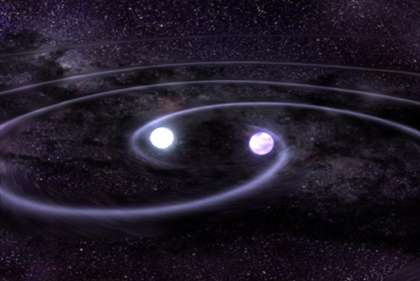
A:
The major difference is due to the way in which they are formed.
1. White dwarfs are formed from the collapse of low mass stars, less than about 10 time the mass of the Sun. This star loses most of its mass in a wind, leaving behind a core that is less than 1.44 solar mass. On the other hand, neutron stars are formed in the catastrophic collapse of the core of a massive star.
Other differences follow:
Submitted by chandra on Thu, 2010-01-21 09:14
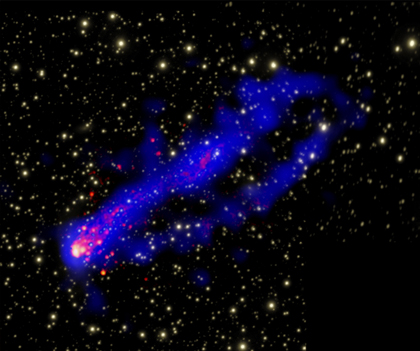
Two spectacular tails of X-ray emission has been seen trailing behind a galaxy using the Chandra X-ray Observatory. A composite image of the galaxy cluster Abell 3627 shows X-rays from Chandra in blue, optical emission in yellow and emission from hydrogen light -- known to astronomers as "H-alpha" -- in red. The optical and H-alpha data were obtained with the Southern Astrophysical Research (SOAR) Telescope in Chile.
Submitted by chandra on Wed, 2010-01-13 10:27
Q:
How do we know that we – and our Solar System – don't live inside a black hole?
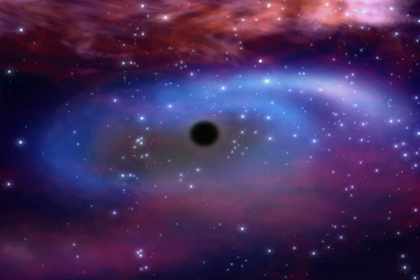
Submitted by chandra on Tue, 2010-01-05 09:45

Astronomers have long known that the supermassive black hole at the center of the Milky Way Galaxy, known as Sagittarius A* (or Sgr A* for short), is a particularly poor eater. The fuel for this black hole comes from powerful winds blown off dozens of massive young stars that are concentrated nearby. These stars are located a relatively large distance away from Sgr A*, where the gravity of the black hole is weak, and so their high-velocity winds are difficult for the black hole to capture and swallow. Scientists have previously calculated that Sgr A* should consume only about 1% of the fuel carried in the winds.
Submitted by chandra on Mon, 2010-01-04 09:25
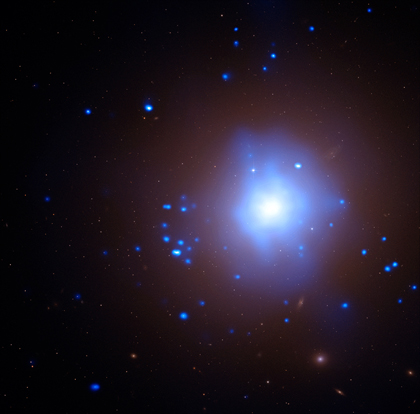
Evidence from NASA's Chandra X-ray Observatory and the Magellan telescopes suggest a star has been torn apart by an intermediate-mass black hole in a globular cluster. In this image, X-rays from Chandra are shown in blue and are overlaid on an optical image from the Hubble Space Telescope. The Chandra observations show that this object is a so-called ultraluminous X-ray source (ULX). An unusual class of objects, ULXs emit more X-rays than any known stellar X-ray source, but less than the bright X-ray sources associated with supermassive black holes in the centers of galaxies. Their exact nature has remained a mystery, but one suggestion is that some ULXs are black holes with masses between about a hundred and a thousands times that of the Sun.
Submitted by chandra on Mon, 2009-12-28 11:03

When we get to this point in the calendar, the "year in review of fill-in-the-blank" lists just come out in droves. You can't seem to drive to the mall without running over a "best of 2009" compendium of something or other. It's as if we have all had collective amnesia over the past 12 months and are required to be subjected to a crash review course of the year that was.
Submitted by chandra on Thu, 2009-12-17 14:07
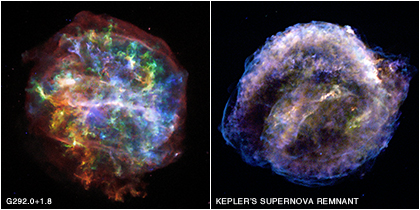
These two supernova remnants are part of a new study from NASA's Chandra X-ray Observatory that shows how the shape of the remnant is connected to the way the progenitor star exploded. In this study, a team of researchers examined the shapes of 17 supernova remnants in both the Milky Way galaxy and a neighbor galaxy, the Large Magellanic Cloud.
Submitted by chandra on Thu, 2009-12-10 09:53
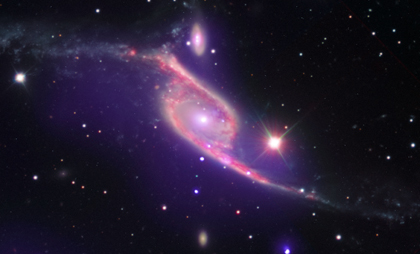
This composite image of data from three different telescopes shows an ongoing collision between two galaxies, NGC 6872 and IC 4970 (roll your mouse over the image above). X-ray data from NASA's Chandra X-ray Observatory is shown in purple, while Spitzer Space Telescope's infrared data is red and optical data from ESO's Very Large Telescope (VLT) is colored red, green and blue.
Submitted by chandra on Wed, 2009-12-09 13:23
Q:
Is our solar system moving or traveling within our Galaxy? Is our Galaxy traveling or moving in the Universe? If so, how fast?
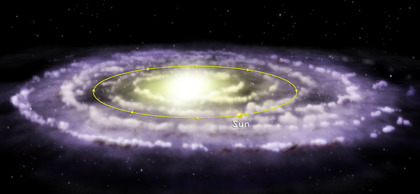
Pages